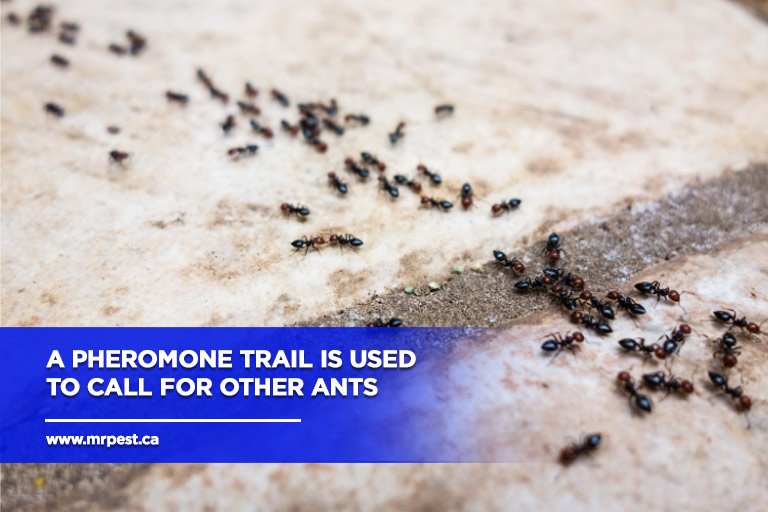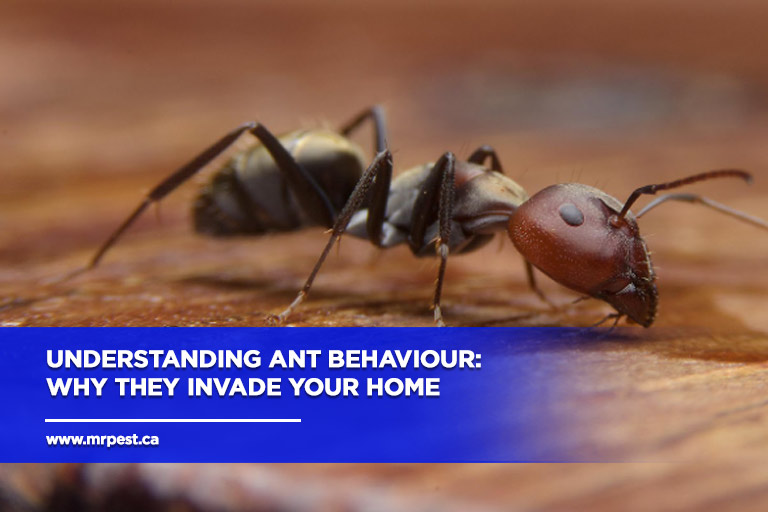Ants are tiny creatures, yet their presence in our homes can be surprisingly disruptive. Whether it’s a trail of them marching across the kitchen counter or discovering them in the pantry, these uninvited guests often leave us wondering why they’ve chosen to invade our space. Understanding ant behaviour is not just about identifying the problem; it’s key to preventing future invasions.
Types of Ants Commonly Found Indoors
Ants are a diverse group, and several species are known to invade homes. Understanding the types of ants you might encounter is crucial for effective control. Here are some of the most common ant species found indoors:
- Odorous House Ants
Odorous house ants are small, brown ants known for the unpleasant, rotten coconut-like smell they emit when crushed. These ants are particularly troublesome because they can form satellite colonies indoors, making them persistent pests.
According to a publication in NC State Extension, odorous house ants often build these colonies near sources of heat and moisture, such as in wall voids or under appliances. They are attracted to sugary foods and can quickly become a nuisance if left unchecked.
- Carpenter Ants
Carpenter ants are larger than most indoor ant species and are known for their wood-damaging behaviour. Unlike termites, they do not eat wood but excavate it to create nests, which can lead to structural damage in homes.
Carpenter ants are usually black or reddish and are attracted to moist, decaying wood. They often enter homes in search of food and nesting sites.
- Pavement Ants
Pavement ants are another common indoor invader, named for their habit of nesting in cracks in pavement and concrete. These ants are small, dark brown to black, and are often seen foraging indoors for food.
They are omnivorous and will eat a wide variety of foods, including sweets, proteins, and greasy items. Pavement ants typically invade homes during colder months or when outdoor food sources become scarce, seeking out warmth and sustenance.
Ant Behaviour and Communication
Understanding how ants communicate and behave is key to understanding why they invade homes. Ants are highly social insects that rely on a sophisticated system of communication and organization to thrive. Here are some key aspects of their behaviour:
- Pheromone Trails

Ants use pheromones, chemical signals, to communicate with each other. When a worker ant discovers a food source, it leaves a pheromone trail on its way back to the colony.
This trail acts as a guide for other ants to follow, leading them directly to the food. The more ants that follow the trail, the stronger the pheromone signal becomes, resulting in a larger number of ants converging on the food source. This is why it can seem like ants suddenly appear in large numbers after just one scout has found a morsel.
- Social Structure and Hierarchy
Ant colonies have a complex social structure with a strict division of labour. At the top of the hierarchy is the queen, whose primary role is to reproduce. Worker ants, which are usually sterile females, handle foraging, caring for the young, and maintaining the nest.
Soldier ants, a specialized group of workers, defend the colony from threats. This highly organized social system allows ants to efficiently manage resources and adapt to changing conditions.
- Foraging Habits
Ants are opportunistic foragers. They use a combination of pheromone trails and individual scouting to locate food. Once a food source is identified, ants communicate its location to the rest of the colony.
They prioritize high-energy foods, like sweets and proteins, which provide essential nutrients for the colony’s growth and maintenance. The efficiency of their foraging habits often leads to quick and significant infestations when they find a reliable food source inside a home.
Why Ants Invade Homes
Ants are driven by basic needs like food, water, and shelter, which can often be found in abundance within our homes. Aside from searching for food, 2 more factors contribute to their decision to invade indoor spaces, making it essential to understand their motivations for better prevention.
- Seeking Shelter
Weather and environmental conditions outside can prompt ants to seek shelter indoors. During extreme weather, such as heavy rains, drought, or cold temperatures, ants may move inside to escape unfavourable conditions.
They are adept at finding small cracks and crevices in walls, windows, and foundations to enter homes. Once inside, they establish nests in hidden, warm areas, such as behind baseboards, inside walls, or under appliances, where they are protected from the elements.
- Water Sources
Water is crucial for ant survival, and they are often drawn to moist environments. Homes with leaky pipes, damp basements, or areas with poor ventilation can become attractive habitats for ants.
They need water not only for drinking but also for the colony’s maintenance. Bathrooms, kitchens, and laundry rooms are common areas where ants might find the moisture they need, making these locations hotspots for potential infestations.
Prevention and Control Strategies
Preventing ant infestations requires a combination of proactive measures and quick responses when signs of ants appear. By understanding their entry points, food sources, and nesting preferences, homeowners can take effective steps to keep ants at bay.
- Identify Entry Points
The first step in preventing ants from entering your home is to identify and seal their entry points. Common entryways include cracks in the foundation, gaps around windows and doors, and openings around utility lines.
Sealing these gaps with caulk or weatherstripping can help prevent ants from gaining access. Installing door sweeps and repairing damaged screens can further reduce the chances of ants finding a way inside.
- Maintain Cleanliness

Keeping your home clean and free of food attractants is crucial in deterring ants. You may deter these pests from entering your home by routinely cleaning your worktops, vacuuming your floors, and clearing up spills and crumbs right away.
Food should be kept in sealed containers, and ripe fruits should be refrigerated. Regularly take out the trash and ensure that outdoor garbage bins are tightly sealed. A clean environment not only reduces the availability of food but also disrupts pheromone trails that ants use to find their way to food sources.
- Use Natural and Safe Chemical Remedies
There are various methods available to deter ants, ranging from natural remedies to safe chemical treatments. Natural repellents, such as vinegar, citrus peels, and essential oils like peppermint and tea tree oil, can be effective in repelling ants.
Spraying these substances in areas where ants are commonly seen can help discourage them from entering. For more persistent infestations, commercial ant baits and insecticides can be used to target and eliminate ant colonies. These products work by attracting ants to consume a toxic bait, which they then carry back to the nest, effectively killing the colony.
- Hire Professional Pest Control
In cases where DIY methods prove insufficient, seeking professional pest control services may be necessary.
For example, if you’re facing a severe infestation or dealing with a particularly challenging species, such as carpenter ants, professional pest control in Barrie can provide specialized treatments and long-term solutions.
Pest control experts have the knowledge and tools to accurately identify the species, quickly locate nests, and effectively implement targeted control measures to ensure a thorough resolution.
Keep Ants at Bay
Understanding the behaviour and motivations of ants can help you keep these pesky invaders out of your home. By following this guide, you can maintain a comfortable and pest-free living environment.
If you’re dealing with a stubborn ant problem, consider reaching out to the experts. For professional ant control in Barrie, contact Mr Pest Control at (705) 739-7378 for effective and reliable solutions.



